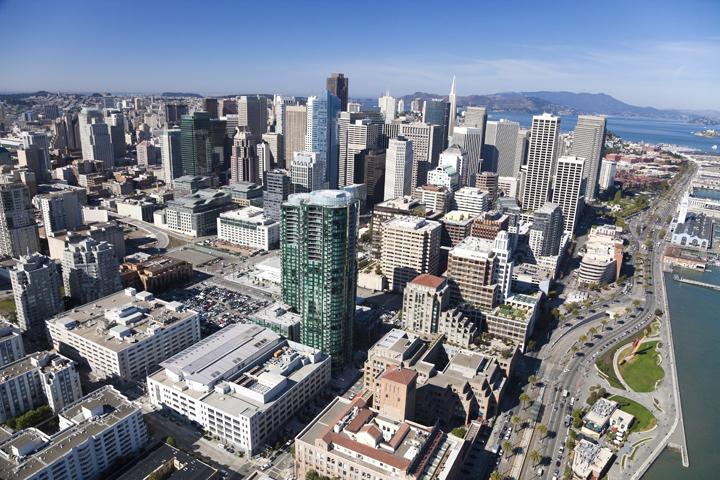Source: San Francisco Business Times
By: Riley McDermid
Date Posted: January 27, 2016
Landmark tech HQ building could fetch as much as $1,000 a foot in sale
The San Francisco landmark PacBell building could fetch as much as $1,000 square feet when it is sold, reports The Registry, a record price that points to how high office rents currently are – and the value they are bringing to commercial real estate sales.
At 286,092 square feet of office space and 9,000 square feet of retail, that could add up to $295 million for the building located at 140 Montgomery, which currently boasts tenants such as Yelp and Lumosity.

The Registry’s report posits those high rents that could drive up the sale price of the building, which Wilson Meany and Stockbridge Capital Group bought from AT&T in 2007.
“One of the reasons for the high sales price is the current condition of the rents in the property. The office building has rents that are closer to current market rents than any other office asset in the city at this time,” The Registry reports. “Should 140 New Montgomery achieve the $1,000 per square foot sale price, it would place the asset very close to replacement cost, which some sources in San Francisco have pegged to be close to $1,000 per square foot.”
“Yelp had signed an eight-year lease in 2011 to occupy nine floors in the building with an annual rental rate that began at $54 a square foot and is planned to increase to $66.41 a foot by the eighth year,” The Registry reports.
“The landlord granted an initial $5.8 million, or $60 a foot, tenant-improvement allowance, according to records filed by Yelp with the U.S. Securities and Exchange Commission. Lumosity signed a lease in 2013 to occupy 36,000 square feet, or three floors, in the building.”
Eastdil Secured, the listing agent for the property, didn’t return a request for comment from the Business Times. Wilson Meany confirmed to The Registry that the building is up for sale.
Link to Business Times Article: Tech HQ Could Fetch $1000 a foot in sale
Link to The Registry Report: 140 Montgomery









